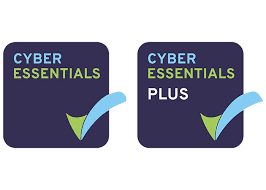Malware is software that’s designed to harm computers without permission. It can steal personal information, damage files, slow down your computer, or even delete important data. Malware can come in many forms, including viruses, spyware, adware, and ransomware.
What Is Malware?
Malware comes in many different forms, such as viruses, worms, trojans, rootkits, keyloggers, and spyware. Below is a brief overview of each and what it can mean for your device if infected.
Viruses are small pieces of code that replicate themselves by attaching themselves to other programs.
Worms are similar to viruses, except they spread through networks instead of individual machines.
Trojans are malicious programs that hide inside legitimate applications.
Rootkits are programs that secretly modify the operating system so that when users try to access certain parts of the machine, they appear to work normally, but actually do something else. Spyware is software that gathers private information about people, such as passwords, credit card numbers, and bank account details.
Ransomware is a type of malware that locks up a user’s computer until they pay a ransom fee.
How different types of Malware operate
The different types of malware operate in different ways and you and your business need to be aware of each to best protect yourselves and your colleagues, each Malware type has its own purpose. Here are some examples:
Viruses – These are the most common form of malware. They attach themselves to other programs and then use them to replicate themselves. This means that once a virus has infected one program, it will infect every copy of that program.
Worms – Similar to viruses, worms spread through networks. However, unlike viruses, worms do not need to attach themselves to another program before replicating. Instead, they simply send copies of themselves out across the network.
Trojans – Trojan horses are malicious programs that hide within legitimate applications. Once installed, these programs usually remain hidden from the user. However, they can still cause damage to the computer.
How To Protect Yourself From Malware
You should make sure that you keep all your software up to date, by working with an IT partner such as Aurora Tech Support your IT partner will “patch” and update all the devices in your organisation and respond to any alerts generated from attempted or successful infections.
New versions of Windows and macOS come out regularly, so it’s important that you install updates as soon as they become available, an automated policy from your IT partner can ensure that this is done as soon as they are made available. Also, make sure that you only download files from trusted sources, again the right IT partner such as Aurora Tech Support will ensure that in almost every case only trusted software can be run no matter how many devices are in your business.
What Should You Do If Your Computer Has Already Been Infected?
Once you’ve identified that your computer has been infected with malware, there are several things you can do to clean it up. First, you need to remove any malicious programs that might still be running on your system, you absolutely need to call in a professional but a good starting point would be a program such as Malware Bytes to contain the damage as much as possible while you seek a professionals help.
Then, the business IT support provider will scan your device for hidden infections using a variety of Cybersecurity solutions to cover all bases as well as manually removing any residual infection purposely disguised to avoid software detection. We use 6 different industry-leading solutions worth £8,000 as well as an engineer manually highlighting and removing threats from your system.
Prevention Tips
Malware is software designed to damage computers or steal personal data and as such can cause significant damage to a computer. Prevention is always better than cure, working with a reliable IT provider to support you and your team is the best way to avoid getting infected in the first place, Malware is a constantly evolving threat and so it’s a Cat and Mouse game between the good guys and the bad guys to stay up to date and prevent as many businesses from attack as possible. Working with a reliable IT provider isn’t a guarantee that your business won’t get attacked but does reduce the likelihood by around 80%.






